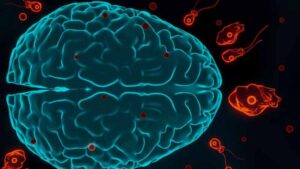
Photo credit: Shutterstock.com/ OsspixSanGRienTo
Blood clots, while often silent, can become life-threatening if not identified and treated promptly. These dangerous blockages in the bloodstream pose a significant risk to health, making awareness of their symptoms crucial for prevention and timely medical intervention.
Understanding the nature of blood clots
Blood clots form when platelets and fibrin create blockages in veins or arteries. These blockages help control bleeding in injuries but can turn dangerous when they form abnormally, impeding blood flow. Blood clots can lead to severe complications such as deep vein thrombosis (DVT), pulmonary embolism (PE), or even stroke if left untreated.
Recognizing the 5 key symptoms of blood clots
1. Swelling in the affected area: One of the earliest signs of a blood clot, particularly in the legs, is swelling that doesn’t go down with rest or elevation. This occurs when the clot blocks blood flow, causing fluids to accumulate.
2. Persistent pain or cramping: Blood clots often cause sharp, throbbing, or cramping pain. It might resemble muscle soreness but becomes increasingly intense over time, especially during movement.
3. Skin discoloration: The skin over the affected area may turn red, blue, or even purple due to restricted blood flow. It may also feel warm to the touch, a clear indication of localized inflammation.
4. Shortness of breath: Blood clots that travel to the lungs, resulting in pulmonary embolism, can cause difficulty breathing, chest pain, or rapid heartbeat. This symptom is a medical emergency.
5. Unexplained headaches or dizziness: Clots forming in the brain can lead to headaches, vision issues, or fainting spells. These symptoms warrant immediate medical attention, as they may indicate a stroke.
What causes blood clots?
Several factors increase the risk of blood clots forming. These include prolonged inactivity, genetic predispositions, smoking, obesity, pregnancy, or using certain medications like hormonal contraceptives. Surgery and injuries can also trigger clot formation.
Lifestyle habits play a significant role in clot prevention. Leading an active life, staying hydrated, and maintaining a healthy weight are among the simplest ways to reduce the risk of clots.
When to seek help
If you suspect a blood clot, seeking immediate medical care is essential. Early diagnosis can prevent life-threatening complications. Medical professionals may use imaging tests, such as ultrasounds or CT scans, to detect clots and determine their severity.
Treatment often involves anticoagulant medications to thin the blood and dissolve clots. For severe cases, surgical intervention may be required.
Preventing blood clots before they form
Prevention is always better than cure when it comes to blood clots. Here are practical strategies to lower your risk:
- Stay active: Regular physical activity promotes healthy blood circulation and reduces the likelihood of clots forming.
- Hydration: Drinking plenty of water prevents blood from thickening, a common precursor to clot formation.
- Avoid prolonged inactivity: During travel or work, take breaks to stand, stretch, or walk. Compression socks can also help if sitting for extended periods is unavoidable.
- Quit smoking: Smoking damages blood vessels and increases the risk of clot-related complications.
Managing long-term risks
Individuals at higher risk must adopt consistent preventive measures. People with a family history of blood clots or existing medical conditions such as diabetes or high cholesterol should regularly consult healthcare providers to manage their risks.
Routine check-ups ensure that any early warning signs of clotting are addressed promptly. For patients prescribed blood thinners, adhering strictly to the medication regimen is crucial for effective clot prevention.
Final thoughts on blood clot awareness
Blood clots are silent threats that can escalate quickly without warning. Recognizing their symptoms and taking immediate action can save lives. Simple lifestyle changes, coupled with an informed approach to health, empower individuals to manage their risks effectively. By staying proactive, everyone can contribute to a healthier, clot-free future.


